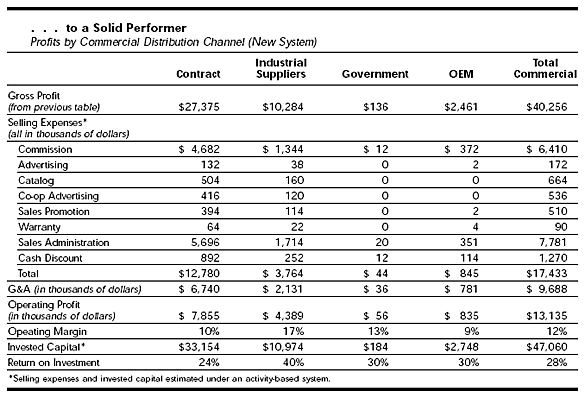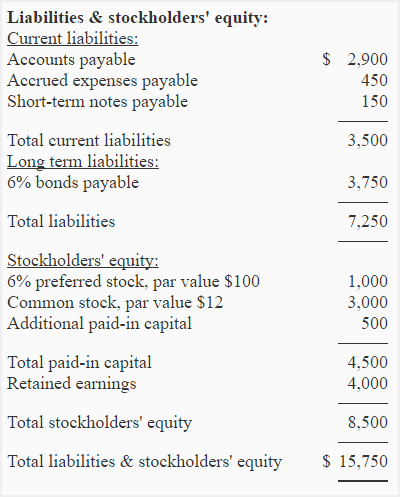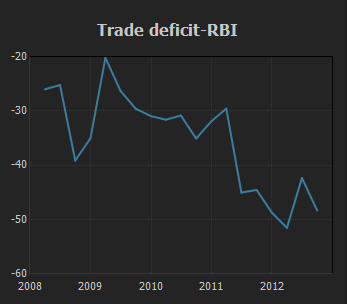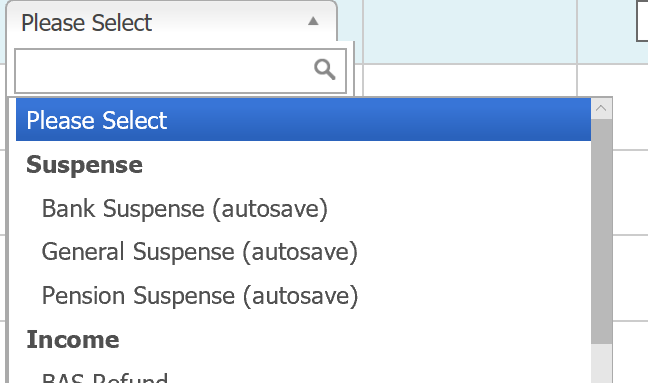Contents:


The disposal of assets involves eliminating assets from the accounting records. This is needed to completely remove all traces of an asset from the balance sheet . An asset disposal may require the recording of a gain or loss on the transaction in the reporting period when the disposal occurs.
Accumulated depreciation is the cumulative depreciation of an asset up to a single point in its life. Salvage value is the estimated book value of an asset after depreciation. It is an important component in the calculation of a depreciation schedule. Investopedia requires writers to use primary sources to support their work. These include white papers, government data, original reporting, and interviews with industry experts. We also reference original research from other reputable publishers where appropriate.
If you dispose of residential rental or nonresidential real property, figure your depreciation deduction for the year of the disposition by multiplying a full year of depreciation by a fraction. The numerator of the fraction is the number of months in the year that the property is considered in service. You must apply the table rates to your property’s unadjusted basis each year of the recovery period. Unadjusted basis is the same basis amount you would use to figure gain on a sale, but you figure it without reducing your original basis by any MACRS depreciation taken in earlier years. However, you do reduce your original basis by other amounts, including the following.
- This is your basis for depreciation_____19.Multiply line 18 by line 6.
- Each partner adds the amount allocated from partnerships (shown on Schedule K-1 , Partner’s Share of Income, Deductions, Credits, etc.) to their nonpartnership section 179 costs and then applies the dollar limit to this total.
- The accumulated depreciation journal entry credits the accumulated depreciation account every year with the yearly depreciation figure, the balance of which is shown in the company’s financial statements.
Lastly, when fixed assets are revalued , it is always helpful to know both the original cost and accumulated depreciation of each fixed asset. Double declining balance depreciation is an accelerated depreciation method. Businesses use accelerated methods when dealing with assets that are more productive in their early years. The double declining balance method is often used for equipment when the units of production method is not used. Journal entry increases the depreciation expense and accumulated depreciation, also known as an asset account. Each asset account should have an accumulated depreciation account, so you can compare its cost and accumulated depreciation to calculate its book value.
Straight-line depreciation method
For example, you cannot deduct depreciation on a car used only for commuting, personal shopping trips, family vacations, driving children to and from school, or similar activities. The corporation’s adjusted basis in the property on that date. Do not subtract depreciation when figuring the corporation’s adjusted basis. The depreciation methods discussed in this publication generally do not apply to property placed in service before 1987.

This section discusses the https://1investing.in/ for determining the depreciation deduction for property you place in service or dispose of in a short tax year. It also discusses the rules for determining depreciation when you have a short tax year during the recovery period . Figure your depreciation deduction for the year you place the property in service by dividing the depreciation for a full year by 2. If you dispose of the property before the end of the recovery period, figure your depreciation deduction for the year of the disposition the same way. If you hold the property for the entire recovery period, your depreciation deduction for the year that includes the final 6 months of the recovery period is the amount of your unrecovered basis in the property.
Increased by the cost of any permanent improvements or additions and other costs that must be added to basis. If you buy property and assume an existing mortgage or other debt on the property, your basis includes the amount you pay for the property plus the amount of the assumed debt. A contribution of property to a partnership in exchange for a partnership interest.
You placed both machines in service in the same year you bought them. They do not qualify as section 179 classified balance sheet because you and your father are related persons. You cannot claim a section 179 deduction for the cost of these machines.
Top 13 Bookkeeping & Accounting Tips for Small Business Owners
Using $20,000 as taxable income, XYZ’s actual charitable contribution (limited to 10% of taxable income) is $2,000. Using $20,000 as taxable income, XYZ’s hypothetical charitable contribution (limited to 10% of taxable income) is $2,000. In addition, figure taxable income without regard to any of the following. If you and your spouse elect to amend your separate returns by filing a joint return after the due date for filing your return, the dollar limit on the joint return is the lesser of the following amounts. If you did not make an election to allocate your costs in this way, you and your spouse would have to allocate $390,000 ($780,000 × 50% (0.50)) to each of you.
- The gain or loss is calculated as the net disposal proceeds, minus the asset’s carrying value.
- This is an expensive purchase, but the owner of the agency knows they can depreciate the cost of the laptops, meaning this one-time purchase will reduce the agency’s tax liability for several years.
- Hence, as of December 31, each computer has been fully depreciated to its residual value and has the accumulated depreciation of $1,500 on the balance sheet.
- As the name suggests, in this method, the amount of depreciation is spread evenly over the useful life of the asset.
The balance in depreciation expense account is transferred to the profit and loss account at the end of the year. Contra Asset AccountA contra asset account is an asset account with a credit balance related to one of the assets with a debit balance. When we add the balances of these two assets, we will get the net book value or carrying value of the assets having a debit balance. Fixed Assets Of The CompanyFixed assets are assets that are held for the long term and are not expected to be converted into cash in a short period of time. Plant and machinery, land and buildings, furniture, computers, copyright, and vehicles are all examples.
What is the Journal Entry for Depreciation?
On the second line, select the Depreciation account you just created from the Account dropdown. If you didn’t see a depreciation account, here’s how to create one. To avoid creating duplicates, make sure you don’t already have a depreciation account. Once you complete your adjusting journal entries, remember to run an adjusted trial balance, which is used to create closing entries. Common prepaid expenses include rent and professional service payments made to accountants and attorneys, as well as service contracts.
2023-04-14 NDAQ:BYRN Press Release Byrna Technologies Inc … – Stockhouse
2023-04-14 NDAQ:BYRN Press Release Byrna Technologies Inc ….
Posted: Fri, 14 Apr 2023 12:00:36 GMT [source]
If you elect not to have any special depreciation allowance apply, the property placed in service after 2015 will not be subject to an alternative minimum tax adjustment for depreciation.. The election must be made separately by each person owning qualified property . The election once made cannot be revoked without IRS consent. Tangible property depreciated under MACRS with a recovery period of 20 years or less.
Overview: What are adjusting entries?
As a result, the tax deduction for depreciation is higher, and the net income is lower. You cannot claim a depreciation deduction for listed property other than passenger automobiles after the recovery period ends. There is no unrecovered basis at the end of the recovery period because you are considered to have used this property 100% for business and investment purposes during all of the recovery period. You can claim the section 179 deduction and a special depreciation allowance for listed property and depreciate listed property using GDS and a declining balance method if the property meets the business-use requirement.
The total cost you can deduct each year after you apply the dollar limit is limited to the taxable income from the active conduct of any trade or business during the year. Generally, you are considered to actively conduct a trade or business if you meaningfully participate in the management or operations of the trade or business. To qualify for the section 179 deduction, your property must have been acquired for use in your trade or business.
Subcontractor invoices and paid bills show that your business continued at approximately the same rate for the rest of the year. If you choose, however, you can combine amounts you spent for the use of listed property during a tax year, such as for gasoline or automobile repairs. If you combine these expenses, you do not need to support the business purpose of each expense.
How to record the disposal of assets
Table 4-1 lists the types of property you can depreciate under each method. It also gives a brief explanation of the method, including any benefits that may apply. MACRS provides three depreciation methods under GDS and one depreciation method under ADS. Any deduction under section 179B of the Internal Revenue Code for capital costs to comply with Environmental Protection Agency sulfur regulations. Provides for total payments that do not exceed $10,000 for each item of property.
You generally cannot use MACRS for real property in any of the following situations. You acquired the property from a person who owned it in 1986 and as part of the transaction the user of the property did not change. You must use the Modified Accelerated Cost Recovery System to depreciate most property. To be depreciable, property must have a useful life that extends substantially beyond the year you place it in service.

The use of your property in performing services as an employee is a business use only if both the following requirements are met. You must determine the gain, loss, or other deduction due to an abusive transaction by taking into account the property’s adjusted basis. The adjusted basis of the property at the time of the disposition is the result of the following. On its 2024 tax return, Make & Sell recognizes $1,000 as ordinary income. This is the GAA’s unadjusted depreciable basis ($10,000) plus the expensed costs ($0), minus the amount previously recognized as ordinary income ($9,000). The remaining amount realized of $100 ($1,100 − $1,000) is section 1231 gain (discussed in chapter 3 of Pub. 544).

You do this by multiplying your basis in the property by the applicable depreciation rate. Do this by multiplying the depreciation for a full tax year by a fraction. The numerator of the fraction is the number of months the property is treated as in service during the tax year .
MG Comet EV production begins ahead of April 19 premiere – Autocar Professional
MG Comet EV production begins ahead of April 19 premiere.
Posted: Fri, 14 Apr 2023 05:43:34 GMT [source]
You can’t claim depreciation on property held for personal purposes. If you use property, such as a car, for both business or investment and personal purposes, you can depreciate only the business or investment use portion. Land is never depreciable, although buildings and certain land improvements may be.


0 responses on "What is depreciation and how is it calculated?"